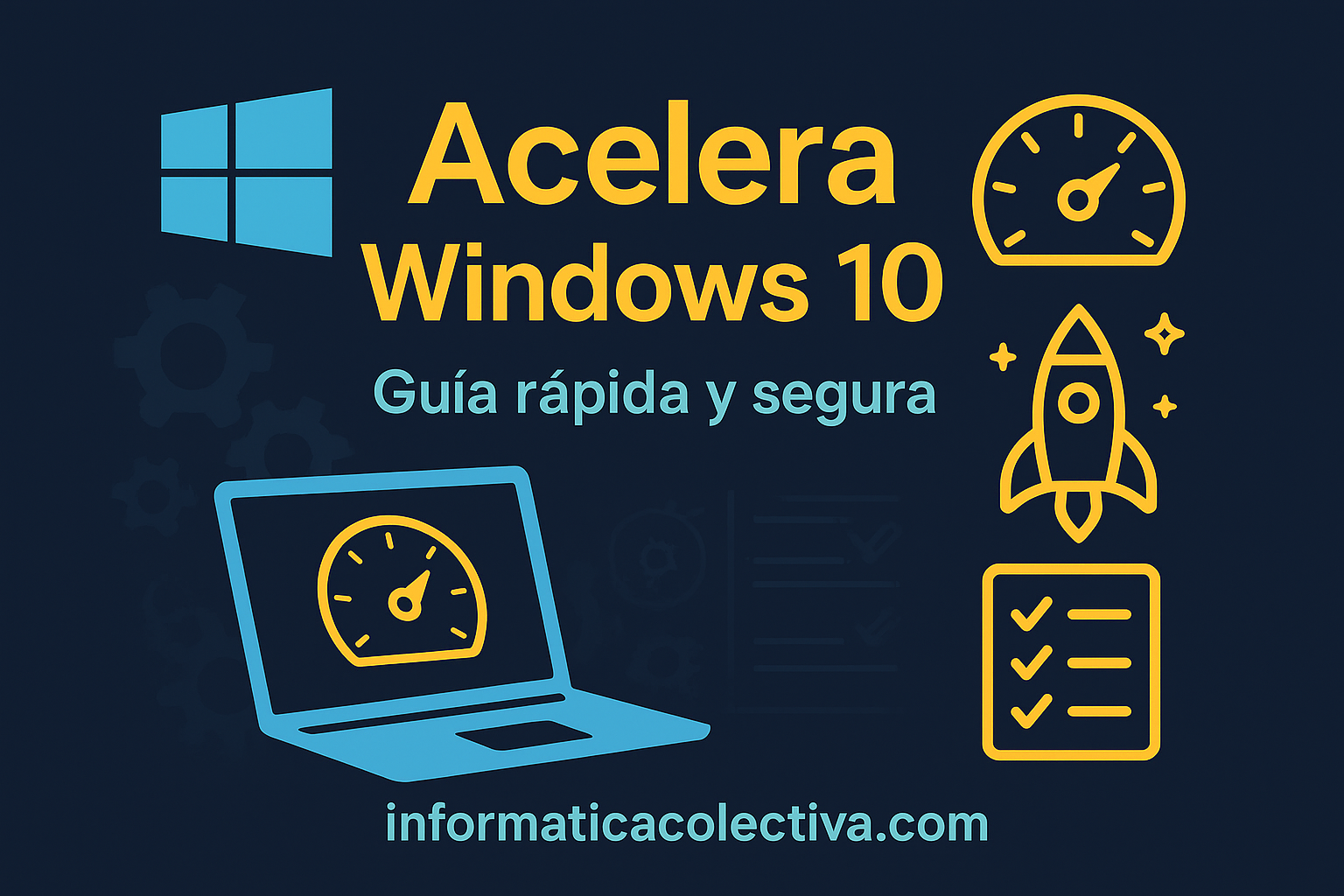Windows 10 más rápido: guía práctica y segura

¿Tu PC tarda en arrancar o se siente “pesado”? En esta guía condensé los ajustes clave para acelerar Windows 10 sin trucos raros y respetando la estabilidad del sistema. Empezaremos por un diagnóstico rápido, seguiremos con mejoras de arranque y rendimiento, y cerraremos con una lista de verificación para que apliques solo lo que necesites. Al final encontrarás dos utilidades de apoyo con sus links de descarga tal como venían en el contenido original.
Antes de tocar nada: diagnóstico rápido
Antes de modificar configuraciones conviene descartar causas comunes de lentitud.
1) Revisa virus o malware
Pasa tu antivirus y, como refuerzo, un antimalware (por ejemplo, Malwarebytes). Si hay infecciones, límpialas y reinicia.
2) Actualiza controladores sensibles
Drivers de almacenamiento (RAID), sonido y network pueden retrasar el arranque si hay incompatibilidades. Busca versiones recientes desde el fabricante o Windows Update.
Acelera el arranque de Windows 10
Activa el Arranque rápido
- En el buscador escribe Opciones de energía.
- En la columna izquierda elige Choosing the behavior of the start/off buttons.
- Click on Cambiar la configuración actualmente no disponible y activa Activar inicio rápido. Reinicia.
Reduce programas al inicio
- Open Administrador de tareas > pestaña Home.
- Observa la columna Impacto de inicio. Deshabilita los que no uses a diario (clic derecho > Deshabilitar). Se recomienda dejar activos drivers de gráfica y sonido.
Retrasa servicios del sistema (avanzado)
- Press Win + R, escribe
services.msc. - En un servicio no crítico, entra a Properties y cambia Tipo de inicio a Automático (inicio retrasado).
- Solo si sabes lo que haces. Tras los cambios, reinicia.
Mejora el rendimiento general
Deja que Windows te ayude
- Botón derecho en Home > Panel de control > Solución de problemas.
- Ejecuta los diagnósticos de Programas, Hardware, Red y Security.
Ajusta la Memoria virtual
- Inicio > Panel de control > System > Configuración avanzada del sistema.
- At Performance > Configuration > Opciones avanzadas > Memoria virtual > Change.
- Quita Administrar automáticamente… y define tamaño personalizado en la unidad del sistema: Inicial = 1.5x RAM; Máximo = 3x RAM (en MB). Útil sobre todo si tu PC tiene 2–4 GB de RAM.
Limpia archivos temporales y cachés
Con el tiempo se acumulan instaladores, temporales y entradas huérfanas del registro. Puedes usar CCleaner Free u otra herramienta de confianza. Haz copia de seguridad del registro antes de cambios profundos.
Desfragmenta (si NO es SSD)
- Busca Defragment y abre Optimize units.
- Select HDD (no SSD) y pulsa Optimize. Repite mensualmente.
Desactiva Cortana (opcional)
Si tu equipo es justo de recursos y no usas el asistente, abre Configuración de Cortana y desactívalo. Ganarás algo de RAM y CPU en equipos antiguos.
Video: pasos resumidos
Herramientas de apoyo (descargas originales)
Mantengo los enlaces tal como estaban en el contenido original. Úsalos bajo tu criterio, analiza con antivirus y crea un punto de restauración antes de instalar.
CLEAN MASTER :
DRIVER BOOSTER:
Buenas prácticas y errores comunes
- No apliques todo a la vez. Cambia una cosa, reinicia y evalúa.
- Respalda un punto de restauración antes de tocar servicios o el registro.
- Evita “optimizers” agresivos que prometen milagros. Prefiere herramientas conocidas.
- Actualiza Windows y drivers con regularidad.
- Espacio libre: deja al menos 15–20% libre en la unidad del sistema para evitar cuellos de botella.
En pocas palabras
El mayor impacto suele venir de activar Inicio rápido, limpiar programas al inicio y ajustar memoria virtual en equipos con poca RAM. Compleméntalo con una limpieza de temporales y, si tu disco es HDD, una desfragmentación periódica. Con estos pasos notarás un equipo más ágil sin comprometer estabilidad.
Conclusion
Optimize Windows 10 no requiere formatear: con ajustes bien elegidos puedes reducir tiempos de arranque y ganar fluidez en el día a día. Si estás renovando tu instalación, te puede servir esta guía para activar Windows 10 o, si te gusta personalizar, cómo instalar los nuevos iconos de Windows 10.


Write us a comment: